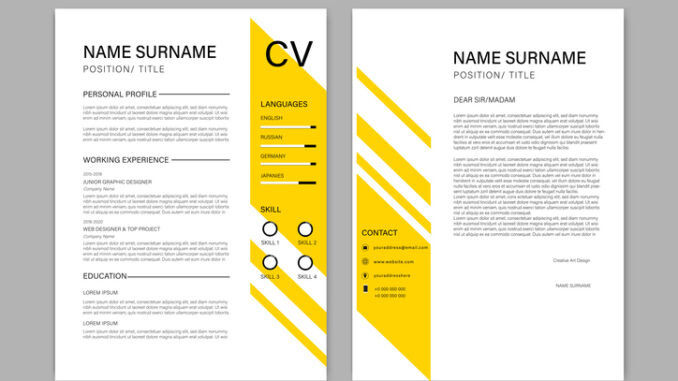
With so many people thinking about searching for a new job, it’s more important than ever that your CV stands out
CREDIT: This is an edited version of an article that originally appeared on Robert Half
Employers and recruiters spend an average of 6-8 seconds looking at your CV – so getting it right is vital. It’s difficult to know exactly what to include, and what to avoid – such as these buzzwords we reported on recently.
We see hundreds of CVs every day, so we know what to look for. Here we outline all the ‘dos’ and ‘don’ts’ so that you can refresh your CV and send it to recruiters and potential employers with confidence.
Don’t:
Write your previous experience in chronological order
Your most recent and relevant experience should be showcased at the top. A chronological CV may be confusing and puts you at risk of being overlooked by employers – and don’t include too much detail on junior roles – a job title, dates and one line will do.
Share too much information in your personal statement
Potential employers do not need to know about divorces, break-ups or custody agreements. Employers often form a negative opinion when candidates overshare on personal circumstances or drivers.
Go into too much detail
Don’t give it all away up front – make sure you save something for the interview. If you can develop your achievements and experience, or add something new during your interview, you are more likely to make an impression on the panel.
Use company language or jargon
While you may be used to using certain terms or abbreviations, the person reading your CV may not be able to decipher your meaning. Try to use language that will be understood by everyone in your field, or on the interview panel, not just your current company.
Include a photograph
Many companies are trying to reduce unconscious bias in their interview processes (e.g., using blind CVs) and including a photograph makes it harder to maintain balance.
Managers are always looking for reasons not to interview someone, so avoiding the pitfalls when rewriting your CV can make all the difference. But it isn’t all about what you shouldn’t do, you also need to think about how stand out and keep potential employers engaged in what you have to offer.
Do:
Include career gaps in your CV
Being vague can be a red flag in the shortlisting process. You don’t need to include too many details – one line will do. This shows honesty and positivity, rather than avoidance.
Don’t write in paragraphs
It is important that your CV is clear and easy to read – recruiters and managers who are shortlisting look out for keywords rather than written text. Write in bullet points rather than full sentences.
Keep your CV as short as possible
For junior roles, a CV should not be longer than two sides of A4 and, for a more senior role, (or a more experienced candidate) it could go onto three sides. If your CV is longer than three sides, consider what you might be able to cut down or remove.
Think carefully before taking a risk
Unusual CVs can be exciting and refreshing, but they are also incredibly risky – particularly for white collar or blue-chip roles. Potential employers may think that you are all style and no substance; if you have the skills and experience, let your CV speak for itself.
Work with a recruitment partner
Recruiters look at CVs all day so they know what will set you apart from the crowd. They will also have a better idea of what the client is looking for and can, therefore, help you to draw out the most relevant skills on your CV.
Tailor your CV
This is less important if you’re applying for a junior or generalist role but, if you’re applying for a senior specialist role, it can make a big difference. You don’t need to change much, simply draw out the skills or achievements that are the most important for the role instead of using buzzwords like ‘hard-working’ or ‘commercial’ – which can turn employers off. Think carefully about examples you can give that demonstrate the skills you are seeking to promote.


Be the first to comment